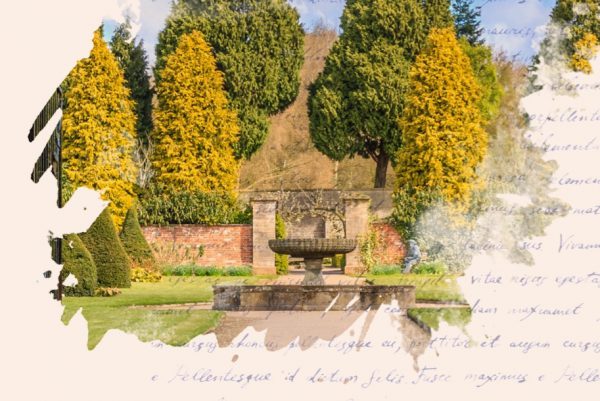Having worked at Newstead Abbey for four years, there are certain rooms that become your favourite (and by that I mean you get sucked in without permission). Having a long-standing appreciation for all things Oriental, it seemed natural for me to be drawn to the Japanese Room.
The Japanese Room started its life around the year 1900, where sisters Ethel and Geraldine Webb (two of the seven children of William Frederick Webb and Emilia Goodlake) created a private sitting room as they both wanted the room as their own bedroom. They filled the room with souvenirs from their many travels to Japan and China (the travel bug they got from their father who spent a lot of time in Africa and India).
Some of the furniture and design ideas they brought back from their many journeys are still present in the room. From the 18thC gold plated paper screens depicting symbols of wealth (herons and peacocks adorn the walls), hardwood panels with traditional Japanese images of cherry blossom trees and waterfalls, and a 19thC Chinese folding screen inlaid with ivory and mother of pearl, the room became a firm favourite with the Webb sisters.
Their father also gifted the sisters with a unique late 18thC ivory chair. Mr Webb bought this chair from The East India Trading Company founder Warren Hastings, who in turn got the chair from Tipo Sahib Palace. It is also well known that the same chair belonged to Queen Charlotte, consort to King George III.
Ethel and Geraldine’s love for the Far East also extends out into the gardens. The Japanese Garden was designed by the sisters along with their mother between around 1899 and 1914. On one of their many travels, the Webb sisters even went as far as bringing a Japanese horticulturist back to England to help design the garden (along with a number of outdoor ornaments).
Ethel Webb was greatly inspired by the book “Landscape Gardening In Japan (1893). Detailed features include waterfalls, a traditional style “tea house” outbuilding, and a Japanese style gate which represented the way out of life. With the Japanese horticulturist (whose name is unfortunately still unknown) the Webb ladies worked on creating the traditional landscapes which today are still loved by many visitors.
Written by Deena Mistry, Visitor Assistant at Newstead Abbey, with the expertise of Amanda Gibbons, Heritage Assistant and local Historian Philip Jones.
